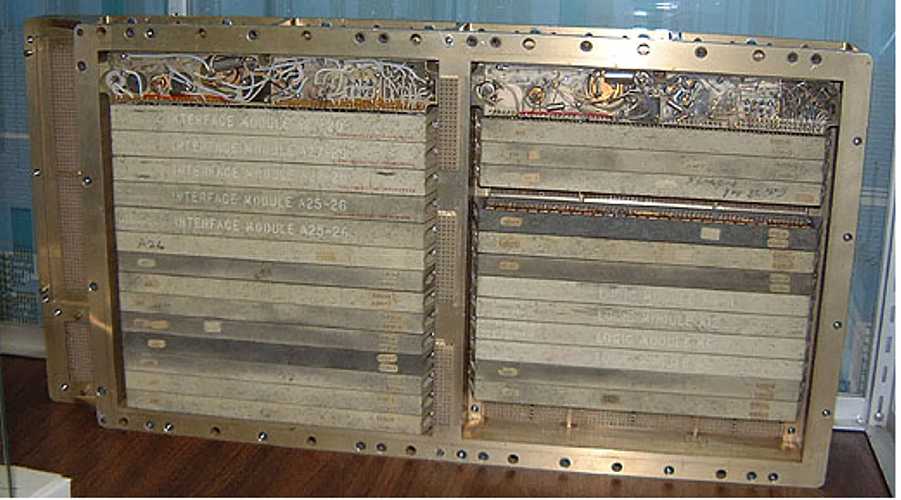As a child of the 60's, I continue to be interested in space. Specifically, the technology of space. This week, the
Science Channel is running a series this week called
Moon Machines during their
Space Week 2008.
The episode I just watch is called "Navigation."It details the creation of the
Apollo command module guidance computer (
AGC) by the
MIT Instrumentation Lab.

Apollo Guidance Computer Specifications:
Instruction Set: Approximately 20 instructions;
100 noun-verb pairs, data up to triple-precision
Word Length: 16 bits (14 bits + sign + parity)
Memory: ROM (rope core) 36K words; RAM (core) 2K words
Disk: None
Performance: approx. Add time - 20us
Basic machine cycle: 2.048 MHz
Technology: RTL bipolar logic (flat pack)
Size: 24" x 12.5" x 6" (HWD)
Weight: 70 lbs;
Number produced: 75
Cost: Unknown.
Power consumption: Operating: 70W @ 28VDC; Standby 15.0 watts
There were a few bits of information I thought were interesting:
At the time they were building the
AGC the 'integrated chip' was just being developed. It's a frequently cited that the space program and perhaps the
AGC more than any other single part of this program that drove
IC development, an observation
Eldon Hall makes in his book
Journey to the Moon. At one point NASA was consuming 60% of all chips being manufactured. They would weight them, then
immerse them in a bath of freon. If they weighed even a few micrograms greater they would toss the entire batch away since there had to be some flaw which absorbed some of the freon.
It is common to hear that many of our devices are more powerful than the Apollo guidance computer, but I never heard what the total was until now - 72
kb. A $100 MP3 player has 50,000
times more storage space then the computer that got Apollo to the Moon. I think back to the C
ommodore 64 I had and even it was pretty close to the processing
AGC power (I wonder if the MIT guys "
peeked and poked")
The programs were
literally hardwired and "weaved" together using
rope memory.
The computer's other error codes included error 00404, which was shorthand for "
IMU orientation unknown." This has been compared to the
HTTP 404 "browser navigation" error code, although the later was not based on it.
(If one is really into this stuff feel free to download the GNU
Virtual AGC or
build a real one in your basement. The
original schematics are available.)
Sphere: Related Content
 Citysearch and Antenna Audio piloted QR Codes, in San Francisco back in the Spring. The are readers available for just about every mobile platform, including iPhone.
Citysearch and Antenna Audio piloted QR Codes, in San Francisco back in the Spring. The are readers available for just about every mobile platform, including iPhone.



